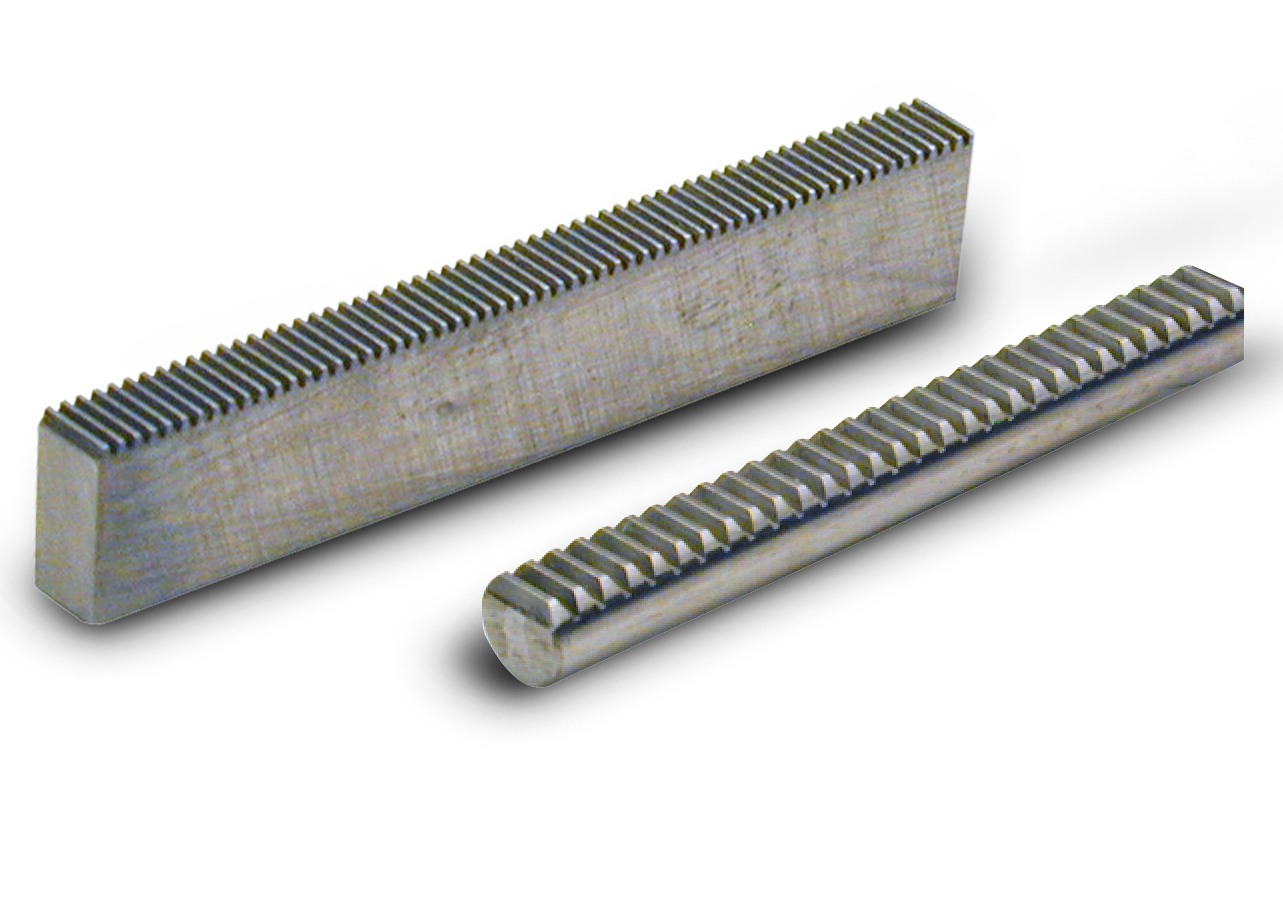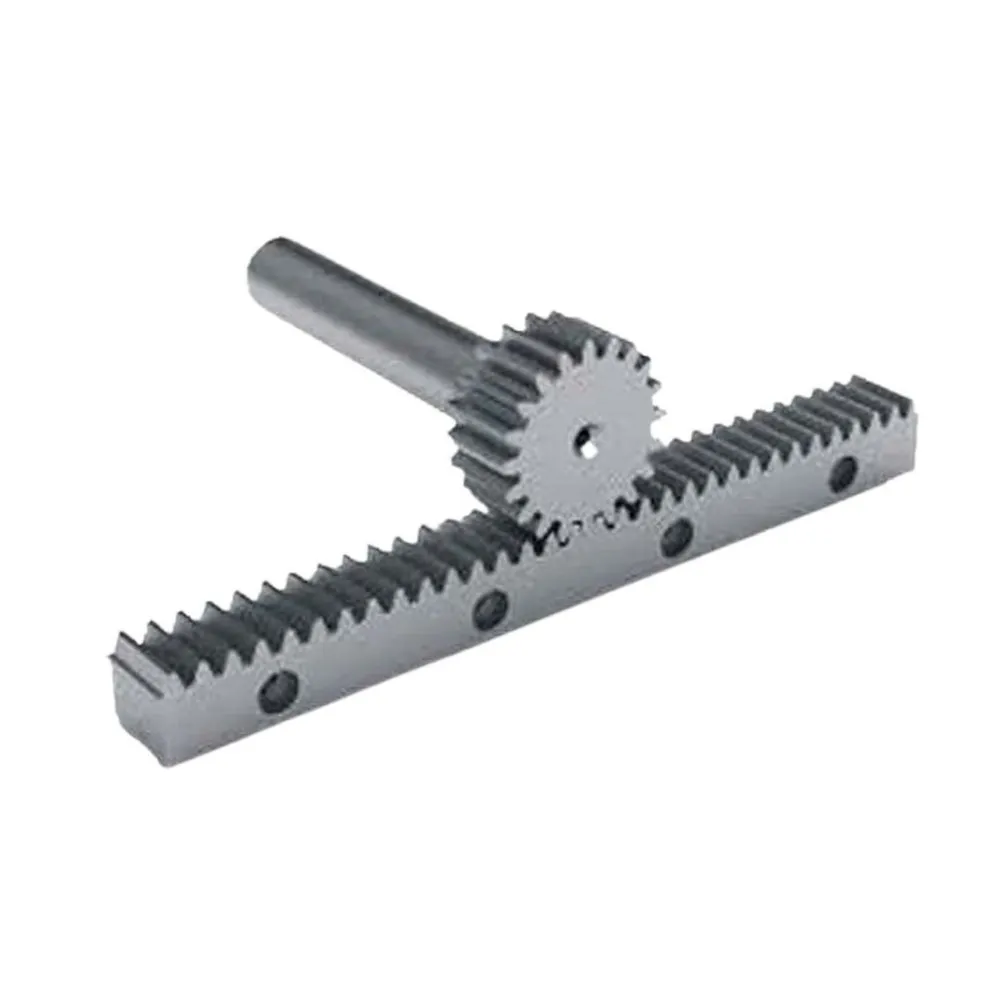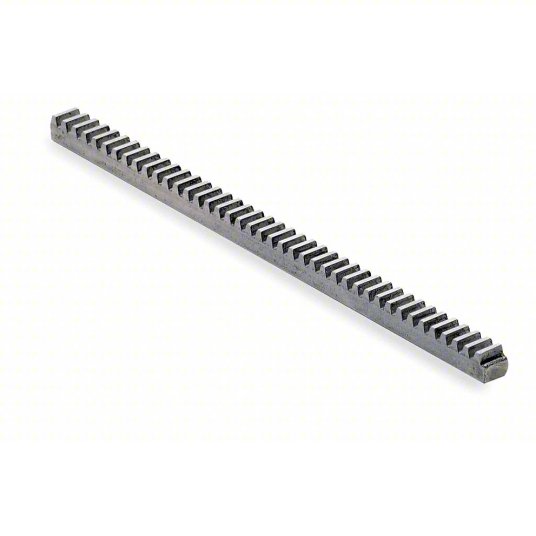Product Description
Product Description
Iron gear rack
Made of Q235 steel for sliding doors, It is usually used with a door motor. Our products are exported to Southeast Asia, Europe, South America, etc. Reliable quality, Each piece of gear rack has screws, as shown below.
You are warmly welcome to send us an inquiry for detailed information.
| Product Name | Specification | Modulus | Material |
| Nylon Rack | 2 Eyes Light | M4 | PA66 |
| Nylon Rack | 2 Eyes Heavy | M4 | PA66 |
| Nylon Rack | 4 Eyes Light | M4 | PA66 |
| Nylon Rack | 6 Eyes Heavy | M4 | PA66 |
| Iron Rack | 8*30*1005 | M4 | Q235 |
| Iron Rack | 8*30*1998 | M4 | Q235 |
| Iron Rack | 9*30*1005 | M4 | Q235 |
| Iron Rack | 10*30*1005 | M4 | Q235 |
| Iron Rack | 10*30*1998 | M4 | Q235 |
| Iron Rack | 11*30*1005 | M4 | Q235 |
| Iron Rack | 11*30*1998 | M4 | Q235 |
| Iron Rack | 12*30*1005 | M4 | Q235 |
| Iron Rack | 12*30*1998 | M4 | Q235 |
| Iron Rack | 22*22*1005 | M4 | Q235 |
| Iron Rack | 22*22*1998 | M4 | Q235 |
| Iron Rack | 30*30*998 | M6 | Q235 |
| Iron Rack | 30*30*1998 | M6 | Q235 |
Company Profile
Main Products
Production Process
Packaging & Shipping
FAQ
/* January 22, 2571 19:08:37 */!function(){function s(e,r){var a,o={};try{e&&e.split(“,”).forEach(function(e,t){e&&(a=e.match(/(.*?):(.*)$/))&&1
| Color: | Fixed |
|---|---|
| Customized: | Customized |
| Standard: | International |
| Type: | Connection |
| Material: | Iron |
| Modulus: | M4 |
| Samples: |
US$ 0/Piece
1 Piece(Min.Order) | |
|---|
| Customization: |
Available
| Customized Request |
|---|
Can spur gear racks be used in both mobile and stationary machinery?
Yes, spur gear racks can be used in both mobile and stationary machinery, depending on the specific application requirements. The versatility and reliability of spur gear racks make them suitable for various types of machinery, regardless of whether they are mobile or stationary. Here’s a detailed explanation:
Mobile Machinery:
Spur gear racks are commonly employed in mobile machinery, such as vehicles, construction equipment, agricultural machinery, and transportation systems. They offer several advantages in these applications:
- Power Transmission: Spur gear racks efficiently transmit power from the drive source to the desired components or systems in mobile machinery. They can be used to transfer rotational motion from engines, motors, or power take-off units to various mechanisms, such as steering systems, lifting arms, or conveyor belts.
- Linear Motion: In mobile machinery, spur gear racks are often utilized to achieve linear motion. For example, they can be employed in telescopic mechanisms for extending or retracting components, such as outriggers on cranes or sliding platforms on trucks. Gear racks provide a reliable and compact solution for linear motion requirements in mobile applications.
- Load Handling: Mobile machinery often needs to handle heavy loads or perform lifting and lowering operations. Spur gear racks, with their ability to distribute loads evenly and provide precise positioning, are well-suited for these tasks. They can be used in lifting mechanisms, winches, or material handling systems to ensure controlled and efficient load handling.
- Steering Systems: Spur gear racks are widely utilized in steering systems of vehicles, including cars, trucks, and heavy-duty equipment. They translate the rotational motion of the steering wheel into linear motion to control the direction of the wheels. Spur gear racks offer accurate and responsive steering, ensuring safe and reliable maneuverability.
Stationary Machinery:
Spur gear racks are also extensively employed in stationary machinery across various industries, including manufacturing, automation, packaging, and more. Some key applications of spur gear racks in stationary machinery include:
- Precision Positioning Systems: Spur gear racks play a crucial role in precision positioning systems, such as CNC machines, laser cutting systems, and automated assembly lines. They provide accurate and repeatable linear motion, allowing for precise control and positioning of tools, workpieces, or components.
- Conveyor Systems: In stationary machinery, spur gear racks are commonly used in conveyor systems to facilitate the movement of materials or products. Gear racks provide a reliable and efficient solution for linear motion in conveyor belts, ensuring smooth and controlled material handling.
- Packaging Machinery: Spur gear racks are employed in various packaging machinery, such as filling machines, labeling machines, and packaging lines. They enable linear motion for precise positioning and synchronization of packaging components, ensuring accurate and efficient packaging processes.
- Industrial Automation: In industrial automation systems, spur gear racks are utilized for linear actuators, robotic arms, and other motion control mechanisms. They enable precise and controlled linear motion, allowing for the automation of various tasks and processes in manufacturing and assembly operations.
Overall, spur gear racks offer a versatile and reliable solution for achieving linear motion in both mobile and stationary machinery. Their ability to transmit power, provide accurate positioning, and handle loads makes them suitable for a wide range of applications in diverse industries.
What materials are commonly used in the construction of spur gear racks?
In the construction of spur gear racks, several materials are commonly used to ensure strength, durability, and efficient performance. The choice of material depends on factors such as the specific application requirements, operating conditions, and budget constraints. Here are some materials commonly used in the construction of spur gear racks:
- Steel Alloys: Steel alloys, such as carbon steel and alloy steel, are widely employed in the construction of spur gear racks. These materials offer excellent strength, hardness, and wear resistance. Carbon steel, such as SAE 1045 or 1050, is commonly used for gear racks due to its high tensile strength and affordability. Alloy steels, such as 8620 or 4140, provide enhanced mechanical properties and are utilized in applications requiring higher load-carrying capacity or increased toughness.
- Stainless Steel: Stainless steel is another popular material choice for spur gear racks, especially in applications where corrosion resistance is crucial. Stainless steel alloys, such as AISI 300 series (e.g., 304 or 316), offer excellent resistance to moisture, chemicals, and atmospheric corrosion. These materials are commonly used in food processing equipment, marine applications, or environments with high humidity or exposure to corrosive substances.
- Cast Iron: Cast iron is utilized in the construction of gear racks when high strength and wear resistance are required. Gray cast iron (e.g., ASTM A48 Class 40) is commonly used due to its good machinability, damping properties, and ability to withstand heavy loads. Cast iron gear racks are often employed in industrial machinery, power transmission systems, and applications with demanding operating conditions.
- Plastics: Engineered plastics, such as nylon (polyamide) and acetal (polyoxymethylene), are used in applications where noise reduction, self-lubrication, and resistance to chemical corrosion are desirable. Plastic gear racks offer advantages such as lightweight, low friction, and the ability to run without additional lubrication. They find applications in industries like automotive, consumer electronics, and medical equipment.
- Bronze and Brass: Bronze and brass alloys are utilized in specific applications that require excellent machinability, low friction, and resistance to wear. Phosphor bronze (e.g., ASTM B139) and brass (e.g., ASTM B16) are commonly used for gear racks in applications such as musical instruments, clocks, and low-load precision machinery.
It’s important to note that the selection of the appropriate material for a spur gear rack depends on various factors, including the specific application requirements, load conditions, operating temperatures, and environmental factors. Engineers and designers consider these factors to determine the most suitable material that will provide the necessary strength, durability, and performance for the intended application.
What are the key components and design features of a spur gear rack?
A spur gear rack consists of several key components and design features that contribute to its functionality and performance:
- Rack: The rack is the main component of a spur gear rack. It is a long, straight bar with teeth along one side. The teeth are typically straight and parallel to the rack’s axis. The rack provides the linear motion in the gear rack system.
- Teeth: The teeth on the rack are a crucial design feature. They are designed to mesh with the teeth on the pinion gear. The teeth transfer the rotational motion of the pinion to the linear motion of the rack, or vice versa. The shape, size, and spacing of the teeth can vary depending on the application and the desired performance characteristics.
- Pinion: The pinion is a cylindrical gear that meshes with the teeth on the rack. It is mounted parallel to the rack and rotates to engage with the rack teeth. The pinion transfers rotational motion to the rack, causing it to move linearly. The size of the pinion can vary depending on the gear ratio and the specific application.
- Gear Ratio: The gear ratio is an important design consideration in a spur gear rack system. It determines the relationship between the rotational motion of the pinion and the linear motion of the rack. The gear ratio is defined by the number of teeth on the pinion and the rack. By adjusting the gear ratio, the speed, torque, and direction of the linear motion can be controlled.
- Backlash: Backlash refers to the amount of clearance or play between the teeth of the rack and the pinion. Minimizing backlash is essential for accurate and precise motion transfer. Various techniques, such as proper gear meshing, tooth profile optimization, and using high-quality materials, are employed to reduce backlash in spur gear racks.
- Material: Spur gear racks are typically made from materials with high strength and wear resistance, such as steel or other alloys. The choice of material depends on factors like load requirements, operating conditions, and cost considerations. The teeth of the rack and pinion are often hardened or treated to withstand the forces and wear associated with gear meshing.
- Lubrication: Proper lubrication is essential for the smooth operation and longevity of spur gear racks. Lubricants reduce friction, wear, and heat generation at the gear meshing interface. The type and method of lubrication may vary depending on the application and operating conditions.
These key components and design features work together to ensure efficient power transmission, precise motion control, and durability in spur gear rack systems. By optimizing these factors, spur gear racks can be tailored to meet the specific requirements of various applications across different industries.
editor by Dream 2024-05-08




